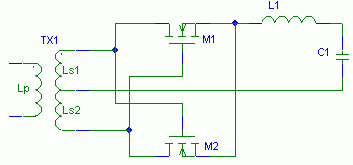- Joined
- Jan 22, 2008
- Messages
- 52,481
- Helped
- 14,756
- Reputation
- 29,794
- Reaction score
- 14,120
- Trophy points
- 1,393
- Location
- Bochum, Germany
- Activity points
- 298,347
I would be satified with one or two original datasheet citations...I did Google search for power Schottky diode and looked through many results.
Good point. It actually rectifies without turning it on. But the latter makes the synchronous efficiency and suppresses reverse recovery effects of the body diode.I thought that the body diode in a MOSFET will always conduct when the MOSFET is reverse-biased, so I do not see why I would need to switch it on.
P.S.: I forgot to mention another point. You should take a look at the IXYS GaAs-Schottky diodes. They offer junction capacitances that are really suited for MHz rectifier applications. Unfortunately, they have considerable forward voltages, so they are mainly good for higher voltage operation.
Last edited:
